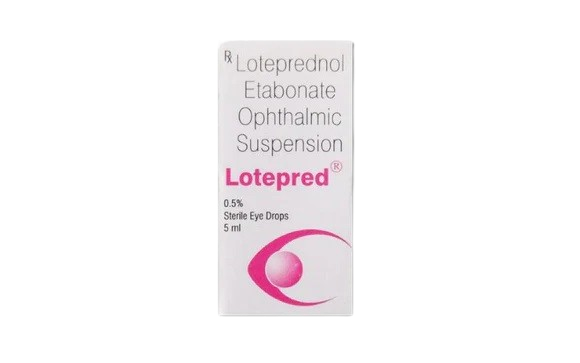Introduction
Lotepred eye drops have emerged as a significant player in ophthalmic care, providing targeted relief for various eye conditions. This comprehensive guide aims to shed light on the uses, benefits, and potential side effects associated with Lotepred eye drops, offering valuable insights for both patients and healthcare professionals.
Uses of Lotepred Eye Drops
1. Ocular Inflammation
Lotepred eye drops are frequently prescribed to manage inflammatory conditions affecting the eyes. Uveitis, conjunctivitis, and keratitis are among the conditions where the anti-inflammatory properties of Loteprednol etabonate prove effective.
2. Post-Operative Eye Care
In the postoperative period following eye surgeries, such as cataract surgery, Lotepred eye drops play a pivotal role in reducing inflammation and promoting the healing process.
3. Allergic Conjunctivitis
Lotepred eye drops are a valuable option for individuals suffering from allergic conjunctivitis. They provide relief from symptoms like redness, itching, and swelling associated with eye allergies.
Benefits of Lotepred Eye Drops
1. Swift Inflammation Relief
Loteprednol, the active ingredient in these eye drops, exhibits rapid anti-inflammatory effects, ensuring quick relief for individuals with inflammatory eye conditions.
2. Minimal Side Effects
Compared to some other corticosteroid eye drops, Lotepred eye drops are known for causing fewer side effects, making them a preferred choice for many patients and healthcare professionals.
3. Versatility in Application
Lotepred eye drops can be used in conjunction with other ophthalmic medications, allowing for a comprehensive and tailored approach to eye care.
Proper Usage and Dosage
1. Consultation with a Healthcare Professional
Before initiating the use of Lotepred eye drops, it is imperative to consult with an eye care professional. They will assess the specific eye condition and provide personalised guidance on dosage and frequency.
2. Proper Administration Technique
To ensure optimal effectiveness, instil the prescribed number of drops into the eye by following the correct administration technique. Avoid touching the dropper tip to prevent contamination.
3. Adherence to Prescribed Schedule
Strict adherence to the prescribed dosage schedule is essential. Missing doses or discontinuing treatment prematurely may compromise the efficacy of the medication.
Potential Side Effects
1. Temporary Stinging or Burning
Some individuals may experience a temporary stinging or burning sensation upon installation of Lotepred eye drops. This discomfort is generally short-lived.
2. Blurred Vision
Blurred vision immediately after using Lotepred eye drops is a common side effect. It is advisable to refrain from activities requiring clear vision until the effects subside.
3. Increased Intraocular Pressure
Prolonged use of corticosteroid eye drops, including Lotepred, may lead to increased intraocular pressure. Regular monitoring by an eye care professional is crucial to manage this potential side effect.
Conclusion
Lotepred eye drops stand as a valuable tool in the arsenal of treatments for various eye conditions. Understanding their uses, benefits, and potential side effects is essential for both patients and healthcare providers. By following proper usage guidelines and seeking professional advice, individuals can harness the benefits of Lotepred eye drops in managing inflammatory eye conditions effectively. As with any medication, open communication with healthcare professionals and adherence to prescribed guidelines are key to ensuring optimal eye health and well-being.
FAQs
Q1. Can Lotepred eye drops be used for dry eyes?
A1. Lotepred eye drops are primarily prescribed for inflammatory conditions and may not be the first choice for dry eyes. Consult with your eye care professional for appropriate recommendations for dry eye management.
Q2. How quickly can Lotepred eye drops provide relief?
A2. Lotepred eye drops are known for their rapid anti-inflammatory effects, and individuals often experience relief shortly after initiation of treatment. However, the exact timeline may vary depending on the specific eye condition.
Q3. Are there any contraindications for using Lotepred eye drops?
A3. Individuals with a known hypersensitivity to Loteprednol etabonate or any component of the eye drops should avoid using them. It is crucial to disclose any allergies or medical conditions to your healthcare provider.
Q4. Can Lotepred eye drops be used for children?
A4. The use of Lotepred eye drops in paediatric patients should be determined by a healthcare professional based on the specific condition and individual considerations. Paediatric usage may require careful monitoring.





Comments